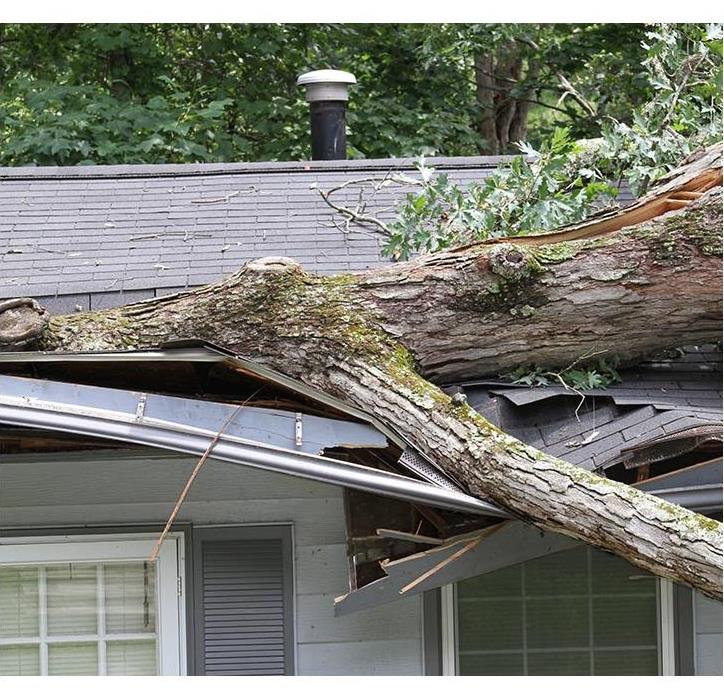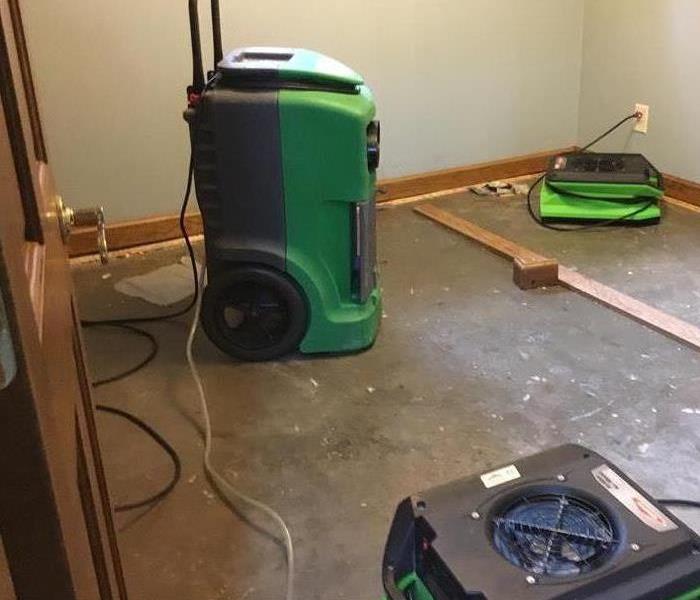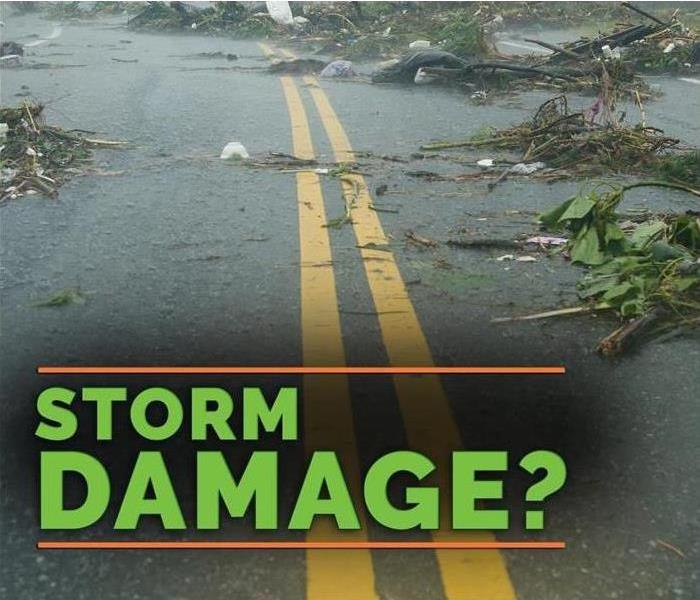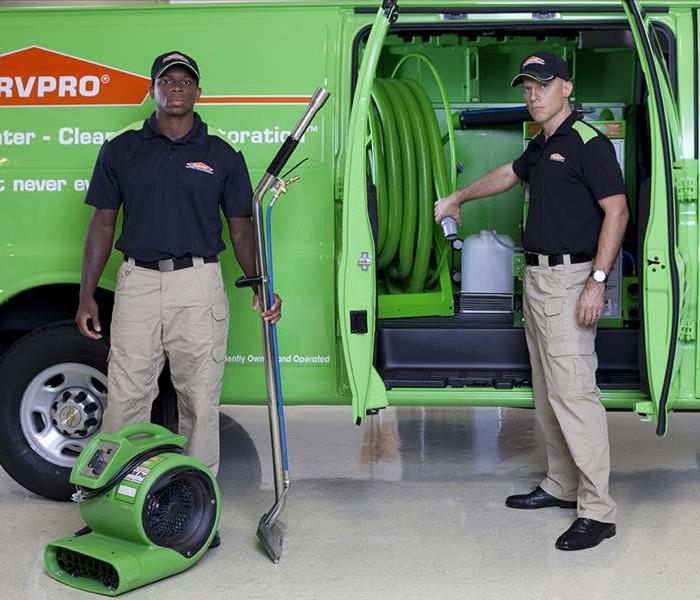Recent Storm Damage Posts
St. Croix River Flooding
4/14/2023 (Permalink)
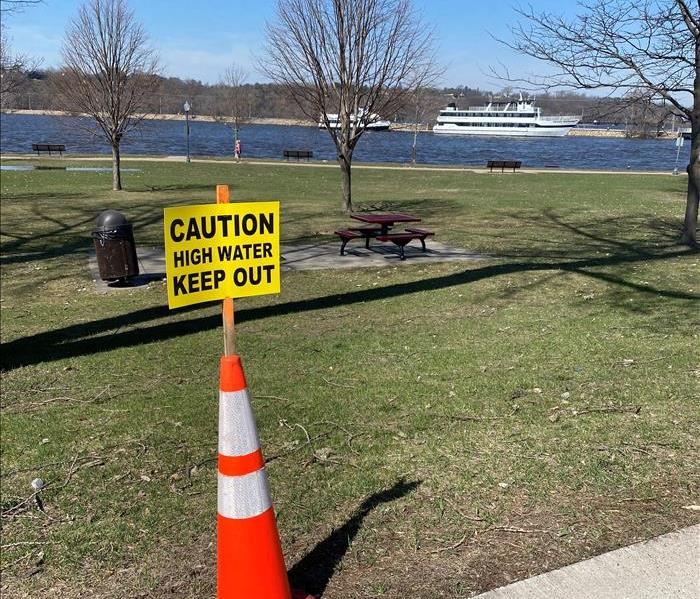 St. Croix River at Hudson, WI
St. Croix River at Hudson, WI
Spring has finally arrived in Wisconsin! The sunshine and warm temperatures are such a blessing and bring so much joy. Of course, every season has its good and bad.
The good news is that the snow has melted here in Hudson, Wisconsin. It was a relatively calm spring. We did not receive an influx of calls from people with wet basements caused by the snow melt.
There is still worry about river flooding however. The snow up north is still melting and headed our way. Major flooding is still forecasted for the St. Croix River. According to The National Weather Service the river is expected to rise above flood stage Saturday evening, April 15, 2023 and continue rising to a crest of 89 feet Tuesday morning. Flood stage is at 87 feet. At 89 feet, the Lake Mallalieu dam gets overtopped.
While the warm temperatures this week may feel like summer, please remember that rivers are very dangerous this time of year. If you live along the St. Croix River, take precaution to protect your property.
- Move contents out of the basement/ground level floor if possible
- Elevate major appliances onto concrete blocks
- Clean drainage ditches or storm drains
- Use a flood barrier (sandbags, portable flood gates, inflatable flood walls, etc.)
- Make sure your sump pump is working properly
- Turn off electricity at the breaker panel
If floodwater does enter your home, remember that it is contaminated water. Take precautions to protect yourself and your family. If you need help with flood cleanup, give SERVPRO of The Saint Croix Valley a call, 715-381-2266.
How To Prevent Frozen Pipes This Winter
7/3/2022 (Permalink)
 Allow water to drip from any faucet
Allow water to drip from any faucet
Winter storms can wreak havoc on your house, so practicing proper winterization and flood prevention techniques is crucial during the colder months. Did you know that most floods are not caused by excess rainwater but rather from a burst pipe resulting from frozen water in the line? Read on to learn how you can prevent storm damage and keep your house damage-free this winter.
How Do Pipes Freeze?
Unlike other liquids, water expands as it freezes. Therefore, if standing water is left in pipes before winter arrives, it will likely freeze and expand as the temperatures outside drop. Pipes that commonly freeze are:
- Outdoor pipes that are uncovered and vulnerable to the cold.
- Pipes located in unheated rooms like the attic or garage.
- Pipelines that extend along the outside of the house where there is no insulation.
How To Prepare for Winter
As winter looms in River Falls, WI, be sure to properly winterize your home to avoid the need for storm damage repair. Empty your swimming pool, and blow out all sprinkler water lines. Drain your hoses, and open the spouts of all outdoor hose bibs to allow them to empty. Consider adding insulation to your attic, garage, basement, or any other uninsulated areas that contain pipelines.
How To Avoid Frozen Pipes
In the winter, be mindful of keeping garage doors closed to keep the cold air outside. In the bathroom and kitchen, open cabinet doors to keep plumbing fixtures warm. Further, if temperatures approach freezing, allow water to drip from any faucet connected to an outdoor pipeline; you are less likely to experience a frozen pipe if a small amount of water moves through it. Finally, even if you're leaving town, keep your thermostat set to a temperature above 55 degrees F. While your heating bill might be higher, it is still much cheaper than a burst pipe.
Winterizing your home is a relatively easy chore that can save your home from catastrophic damage. Avoid a burst pipe this winter by following these simple and helpful tips.
Where Do Different Types of Flood Damage Come From?
6/22/2022 (Permalink)
 A flooded basement in River Falls, WI.
A flooded basement in River Falls, WI.
What Causes Water Damage?
Heavy flooding can cause serious damage to your River Falls, WI, home, but did you know there are different types of issues it can cause? Depending on the source of the water, your home and its contents may experience a wide variety of problems. Learning what causes water damage and why may help you call for the right type of assistance when these floods happen.
Outdoor Floods
When outdoor floods occur, the water source is usually from a variety of sources, such as:
- Local creeks
- Ponds
- Clogged sewers
These floodwaters usually carry dangerous bacteria, animal offal and sewer contents. Because of its contents, professionals mark this water as Category 3 or black water. You should avoid handling this type of water if it enters your home and call a professional flood restoration service for assistance.
Indoor Sink and Toilet Floods
Flooding that occurs from an indoor source, such as a sink, washing machine, or toilet, may have different grades of cleanliness. For example, if the flood comes from a broken refrigerator line that is used to make ice, this is a Category 1 flood situation that should not be harmful. However, if standing water from a clean source sits for more than 24 hours, it can break down rapidly and grow bacteria. This can cause it to become dangerous to handle. Toilet water is usually considered a Category 3 flood and typically requires the assistance of a flood mitigation and restoration service.
Flood Damage In Basements
When spring thaws occur, they can affect your home's gutters and cause ice dams, which may result in serious water leaks inside your home from the gutters not draining water away properly. Basement leaks and floods are quite common, and depending on how long the water stands in the room, it may be either a Category 2 or Category 3 flood.
Different types of flooding in River Falls, WI, can affect your home in a variety of ways. Generally, avoiding the water until you can call for assistance regarding its removal is usually the wisest course of action.
You Should Not Wait for the Insurance Adjuster if You Have Storm Damage
5/24/2022 (Permalink)
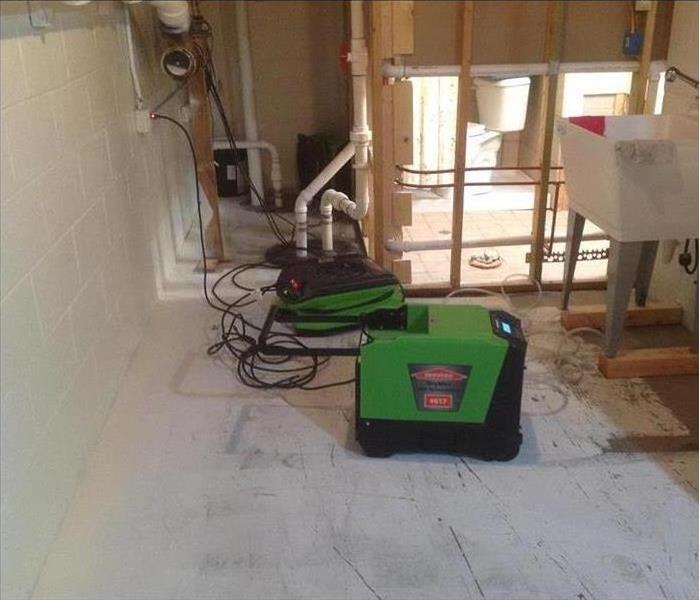 Restoration services in Hudson, WI.
Restoration services in Hudson, WI.
If you are dealing with storm damage in Hudson, WI, one of the first things you should do is call your insurance company. Depending on the type of damage, ask if you have flood insurance or the type of coverage necessary for repair and restoration. After filing a claim, you will be assigned an adjuster to come and estimate the damages. However, you should not wait for the adjuster, as he or she is probably busy dealing with other homeowners and their storm damage, and the longer you wait, the more damage your house will take on.
Types of Damage that Can Occur If Too Much Time Passes
A number of unwanted consequences can occur if you wait too long to start the restoration process. Depending on the type of storm, these may include:
- Mold damage from standing water
- Multiplication of contaminants like bacteria or chemicals
- Further structural damage
- Swelling of furniture and drywall
- Odor buildup
To start the process right away, call a professional storm and flood damage restoration company. These professionals know exactly what steps to take to minimize damage and prevent future issues.
Document Losses and Costs for Flood Insurance Reimbursement
Even if you get the restoration process started before you meet with the adjuster, you can still do things to improve your chances of reimbursement. Document and take pictures and videos of damaged structures and personal items. Keep all receipts related to the repair and restoration of the damage as well as the estimation from the restoration company.
When you are dealing with flood insurance or other storm damage coverage, the adjuster may not always be able to get to you right away. Even when this is the case, do not wait to begin the restoration process, as the quicker you get started to clean up water and other hazards, the better the outcome.
Commercial Storm Insurance: What Does It Cover?
5/4/2022 (Permalink)
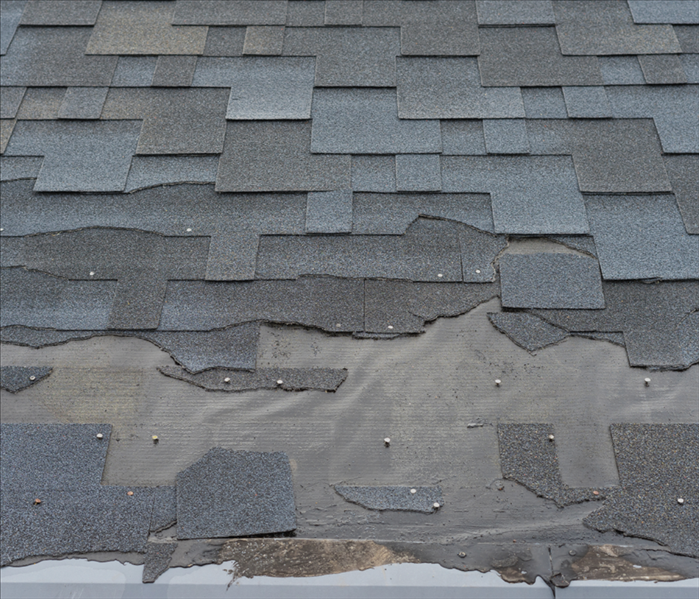 Wind cause missing shingles in this roof.
Wind cause missing shingles in this roof.
What Commercial Storm Insurance Covers?
Are you a Glenwood City, WI business owner who wonders what commercial storm insurance actually covers? It is important to understand your coverage in order to be prepared for an emergency if it should occur. Here are three things that are covered by most policies in addition to damage to your actual building itself.
1. Wind damage. If your area is particularly prone to windstorm issues, you will be happy to learn that most wind-related storm damage is covered by commercial insurance. Remember to keep records of any damage directly caused by wind, such as pictures and receipts from repair work.
2. Theft and Vandalism. Unfortunately, criminal acts can become a concern when dealing with storms and similar disasters, so most policies will cover both vandalism and theft that can affect your building as a result of a storm.
3. Business equipment. If your supplies, furnishings, office fixtures and other equipment are damaged during bad weather, most storm insurance policies will cover it.
Keep in mind that damage from floods, earthquakes and hurricanes may not be a part of your standard insurance coverage without an added rider. Talk to your insurance agent about including these coverages to better protect your business and your investments.
Getting Help After a Storm
If you ever find yourself facing storm-related damage at your business, wait until the weather dies down to seek help. Then, call a trusted commercial storm damage company in the Glenwood City, WI, area for assistance with cleanup and remediation. While you may feel the urge to take matters into your own hands, it is better for you, your business and your insurance claims to get help from trained technicians who know what to do in such a situation.
Storm insurance and storm damage, in general, can be hard to navigate for even the savviest of business owners. Talking to your insurance agent and other knowledgeable professionals can help take some of the burdens off of you and put you in a position to take control after a storm.
Buying in a Flood Zone: What To Do
4/6/2022 (Permalink)
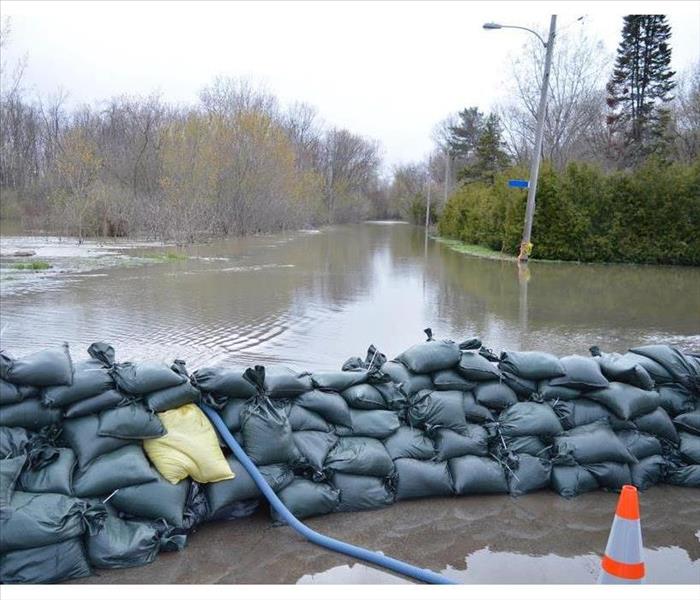 Remember that even homes outside of a flood zone can suffer from floods.
Remember that even homes outside of a flood zone can suffer from floods.
Flood Zones
Are you planning to buy a home in the Prescott, WI, area that falls within a flood zone? There are a few things you should do to prepare so you can better protect your finances and potentially your future property. Here are four steps to take to better inform yourself about flood zones and figure out if you really want to live in a high-risk area.
1. Estimate flood insurance costs. When you live at a location that has a high risk of flooding, it is very common for flood insurance to be required - sometimes by the federal government. Get a few quotes before you buy the home, and make sure to ask for any discounts that you may be eligible for. You will also want to ensure that federal coverage is not required.
2. Learn the home’s exact zone. Some areas of a flood zone are considered lower risk than others. Make sure to find the FEMA map for your area to know exactly what kind of risk you are dealing with. Additionally, your home may need to be re-categorized if it was mapped out a long time ago.
3. Get an elevation certificate. It is possible that an elevation certificate will be required if you purchase a home within a high-risk zone. Such a certificate can also help you further gauge the probability of a bad flood at or near your house.
4. Know your local remediation service. If you should suffer from a damaging flood, you will want professional help to have the best chance of restoring your property. Find out what your most trustworthy local storm damage service is so you have reliable cleanup aid in the event of a disaster.
If you are getting discouraged by the prospect of living in a high-risk area, remember that even homes outside of a flood zone can suffer from floods. After following the steps above, you will be better able to understand what you are getting into before making the serious commitment of home ownership.
Don’t Break Your Back Over Sandbags, Try These Water Barriers Instead
11/22/2021 (Permalink)
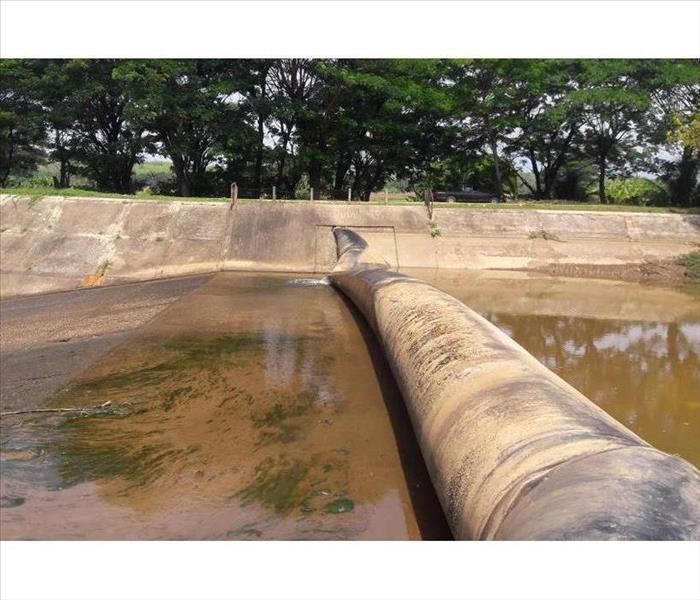 Flood dams can help you protect your building.
Flood dams can help you protect your building.
Sandbags Alternatives
If you know the water is coming, and you have weeks to prepare, tons of sand, and dozens of people to help you fill and move a sand bag around, this is a great way to keep the water from entering your land. But damming a commercial property in Baldwin, WI, before a storm can be difficult using one bag of sand at a time. Here are three new alternatives to the old way of property damming.
1. Water Barricade
Easy-to-use water tubes can be found in lengths between six and 50 feet. They also typically come in several diameters, including 4 inches and 20 inches. You simply lay the tube where you want the dam around your property to be, fill it with water, and watch the tubes prevent the floodwaters from damaging your property. After use, simply hang them up to dry, and store them away for the next time they are needed.
2. Water Fence
Don’t let the unusual design of a water fence put you off because it can protect as well as any sand bag. Many water fences have been engineered from marine-secure panels, reinforced with aluminum and stainless-steel, and covered in PVC canvas. Typically 4 feet tall, these fences are made of panels that can be reused up to 60 times, and that can provide protection from flood damage for years to come. Simply fold and store the sections of fence after use.
3. Water Dam
With a feel of fabric-covered diaper material, this type of floodwater protection may be one of the best flood dams available. Better yet, it can be found at most local hardware stores. Roll the sections out, run hose water over each unit, and watch it expand. The small tubes can also be stacked for additional protection. When the water recedes, the tubes can shrink as they dry out, waiting for the next storm to hit.
The back-breaking work of filling a sand bag can be a thing of the past with these new and surprisingly efficient options to raging floodwaters. Whether you need to protect a small building or a whole city block, it is easy to do with these inventive water barriers. If water does flood your property, contact a water damage specialist for assistance.
6 Steps You Should Take During a Power Outage
5/10/2021 (Permalink)
 You could face a more prolonged outage.
You could face a more prolonged outage.
Most power outages are short. They may only last a few seconds to a couple of minutes. Now and then, however, you could face a more prolonged outage. Being prepared for a longer outage should help your family stay safe while the power’s out and properly return to using electricity in your home when the power comes back. Follow these six steps to prepare for and handle any prolonged power outages that could come your way.
- Create an Outage Kit
The key to safely navigating a power outage — especially an extended outage — is being prepared before the outage happens. Create a home emergency kit that includes supplies you’ll need if the power goes out. Some things you might want to have in your kit include:
Flashlights — either fully-charged rechargeable or battery-powered
Extra batteries
Candles in safe holders
Lighter or matches
Battery-operated or crank radio
External battery packs/charging ports for cell phones and other small electronics
Basic first aid kit
A few bottled waters and non-perishable food items like granola bars
Store your outage or emergency kit in a place that’s easy to find and access if the power goes out and you’re left in the dark. The last thing you’ll want to do when the power goes out is rummage through boxes in the dark.
- Practice for Power Outages
If you have small children or someone with special needs, like an elderly parent, living in your home, do a few tests runs so you know what to do when your power goes out. Small children are often scared of the dark and may panic if the power goes out at night. Store a child-sized flashlight in their room and teach them where to find it. This makes it easier for them to go right to their flashlight if the lights suddenly go out.
For households with someone who has special needs, like medical equipment that needs electricity, be sure you have a backup plan in case of a power outage. You might consider asking friends or family within driving distance if you can use their homes when the power goes out, as long as they have power.
- Investigate Why the Power Is Out
When the power goes out, your first step after grabbing your outage kit should be to find out why it went out. Look out of the nearest window to see if your streetlights or neighbor’s homes still have power. If only your house is dark, you may have tripped a breaker. Find your electrical box and check if any breakers are off. If so, switch them back on to see if that restores power.
If your entire block is out of power, you can check with your electric company to see if they know about an outage. Many electric providers have outage maps and data on their websites so you can easily check on the status of your power from a cell phone. If no outage is reported, call your electric company and let them know an outage has occurred. They’ll likely send out a crew right away to identify the problem and restore power as soon as possible.
- Unplug Electronics and Turn Off Lights
Go around your home to unplug electronics and turn off any lights that were on before the power went out. This is an important and often overlooked step during a power outage. Unplugging your electronics like your TV or microwave can help reduce potential damage to your electrical system or electronics when the power is restored.
When power comes back on after an outage, your home’s electrical system gets a surge of electricity. This surge can cause damage to electronics. You might want to leave one light on the inside and one light on the outside. The inside light will help you know when power is back on, and the outside light can help the power company’s crew know when they’ve restored power to your home.
- Use Generators Safely
A standby generator can be an important tool to keep your power up and running if the power to the grid goes out. Generators also come with a lot of inherent risks. Know how to operate your generator safely before you need to use it during a power outage. Some essential generator safety tips include:
Read and follow the manufacturer’s instructions.
Consider hiring an electrician to help you install a back-up home generator to your electrical panel.
Never connect portable generators to your home’s electrical system.
Always operate your generator outdoors in a well-ventilated area away from doors or windows.
Never bring a running generator into your home, garage or basement.
Connect lights or appliances directly to the generator.
Along with generators, you should never bring outdoor heating or cooking equipment into your home to help heat it. Things like propane camp stoves, charcoal grills, and outdoor heaters give off carbon monoxide and need to be used in well-ventilated, outdoor areas to avoid carbon monoxide poisoning.
- Know What to Do When Power Comes Back
Short power outages will usually end with your lights and appliances coming back on in one wave. After a longer outage, however, you may need to take a few steps to restore power to your home safely. When the power returns, first inspect your home for damage. If there’s standing water in your basement, do not enter the water until you’re sure there are no live electrical wires that could electrify the water.
If you find no damage to your home, start plugging your appliances and electronics back in. Start with large appliances like your refrigerator and wait a few minutes before plugging in each new electronic. This will help your home’s electrical system safely send electricity to your electronics without surging. When your electronics are back on the grid, check your emergency kit and restock any supplies you may have used so you’re prepared for the next power outage.
How to Prepare for a Natural Disaster
5/10/2021 (Permalink)
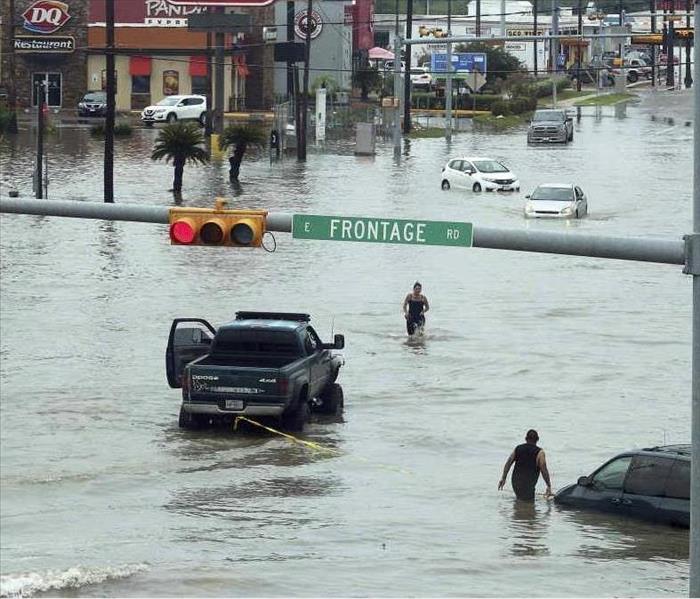 Disasters often come quickly and unexpectedly.
Disasters often come quickly and unexpectedly.
It’s unlikely that you’ll have a lot of time to prepare when a natural disaster strikes. Disasters often come quickly and unexpectedly. According to the Public Policy Institute of California only 29% of Californians feel they’re very knowledgeable about preparing for a disaster.
Being prepared can greatly reduce your risk of injury or damage following a natural disaster. Follow these steps to prepare for a natural disaster.
- Understand Your Level of Risk
Before you can set up an emergency plan or create a disaster kit, you need to know what types of natural disasters pose a threat in your area. You should try to create your disaster plan based on the most likely emergencies to happen in your area. Common types of natural disasters in California include:
Earthquakes: California has many active fault lines, which make it prone to earthquakes. An earthquake occurs when the earth’s crust along a fault line shifts suddenly. This causes movement, like shaking, on the ground level. This shaking can cause unsecured objects to fall, such as a book falling off of a bookshelf, or cause damage to the foundation of buildings.
Wildfires: Wildfires are fast-moving fires that feed off of dry vegetation, such as desert plants like sagebrush. They commonly start due to a lightning strike, but can also be caused by human carelessness. A wildfire can grow quickly and cause major damage to entire neighborhoods or destroy thousands of acres of wilderness. Southern California, in particular, is prone to wildfires due to limited annual rainfall and dry vegetation. Wildfires can potentially be stopped or slowed using a wildfire defensible space around your home.
Mudslides: Mudslides are a type of landslide that is caused by heavy rainfall sweeping loose soil and debris down steep hills. Several areas in California are prone to landslides and mudslides, especially desert landscapes after a sudden rainfall.
Extreme Heat:
Extreme heat is when there is a long period of time with high heat and humidity. This could be 2-3 days of temperatures above 90 degrees. Not only can extreme heat be dangerous to the human body, it is also dangerous to your home. Damages include inconsistent moisture in the foundation, deteriorating roofs, or even warped hardwood floors.
- Plan and Practice Your Disaster Plan
Once you know what natural disasters you’re most likely to encounter, you should come up with a disaster plan in case of an emergency. Since disasters strike unexpectedly, you may not be with your family when one hits. Having a plan in place that everyone knows should help you find one another, even if there’s a power outage or you can’t use a phone.
Your disaster plan should include information such as:
The meeting place for your family.
Potential evacuation routes from home, work or school.
A shelter plan in case your home is damaged.
Considerations for family members with special needs, including children, seniors or those with disabilities.
An emergency contact, such as a family member in a different state.
The location of important documents, such as a bank deposit box or fire-proof safe in your home.
A plan for pets in case of an emergency.
Your plan is only helpful if everyone in your family knows and understands it, so it’s crucial to practice it regularly. This is especially true if you have young children. Sit down as a family and go over the plan in detail, then start practicing.
Remember that different disasters may have slightly different emergency plans. For example, if a wildfire is heading towards your neighborhood, you’ll likely have to evacuate the area and won’t be able to meet your family in front of your home. Be sure to set up multiple meeting spots for different scenarios.
- Invest in a Disaster Preparedness Kit
Whether you buy a pre-made kit or build one yourself, a disaster preparedness kit could help your family stay safe after a disaster. You can create an emergency kit for your home, and smaller kits for your vehicles. This helps you stay safe even if you experience a disaster while on the road.
Your disaster kit should include:
Non-perishable food
Clean drinking and sanitation water in airtight containers
First aid kit
Battery-powered radio
Flashlights
Extra batteries
Bedding and a change of clothes
Power bank and charging cables for your cell phone
Whistle
Pen or pencil and a notebook
Copies of family documents, such as insurance cards and ID
Tarp, duct tape and rope in case you need to build a shelter
Personal supplies – prescription medications, glasses, feminine hygiene products
Infant supplies – diapers, formula, wipes
Pet supplies
Cash
You should check your kit at least once a year to make sure everything still works and nothing has expired. Put the kit in an easy-to-access location in your home and make sure each family member knows its location.
- Learn Basic First Aid Skills
Investing in a CPR certification program could potentially save a life in a disaster situation. If you can’t take a CPR class, you should at least learn basic first aid skills. Not only are these skills helpful in the event of a disaster, but you can use them in non-emergency situations as well. There are lots of ways to learn basic first aid- from taking an in-person class to watching instructional videos on the internet. Find the method that works best for you to learn.
You should also consider teaching your children how to use vital components of your first aid kit. Sit down with your family and go through the kit. Remember that many children may feel anxious at the thought of their parents getting hurt, so try to keep your lessons fun. For example, let your child pretend to be a doctor and use extra supplies, like gauze, to treat your fake injuries.
- Reduce Risks in Your Home
Eliminating hazards in your home, office or vehicle could help you avoid an injury if you experience a natural disaster. Earthquakes, for example, are common in California. The shaking of an earthquake can cause items to fall off shelves or even knock over furniture. Securing objects on tabletops or bookshelves and anchoring your furniture helps reduce the chance it falls over. A wildfire defensible space is another example of reducing risks around your home.
HOW MOLD CAN DAMAGE YOUR HOUSE
4/15/2021 (Permalink)
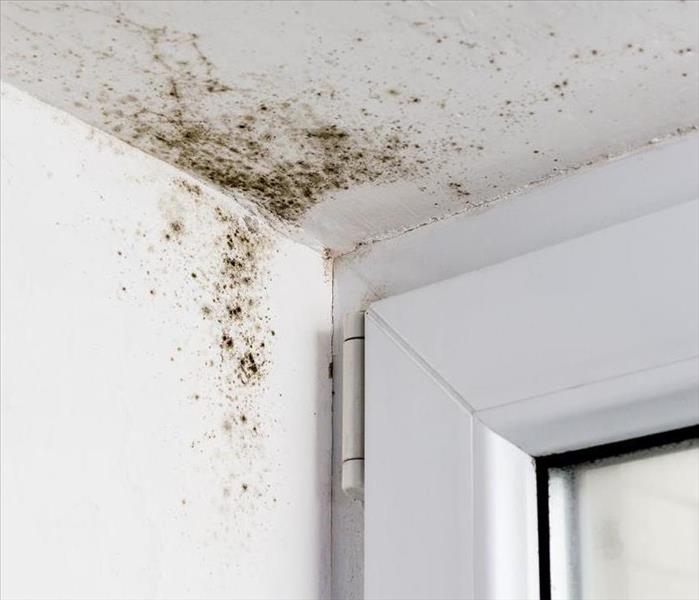 Water damage is the leading cause of mold growth in many homes.
Water damage is the leading cause of mold growth in many homes.
While mold is not harmful at all as it participates in the decomposition of dead organisms and other aspects of the environment, the problem happens when it enters your house and damages it.
Water damage is the leading cause of mold growth in many homes. According to insurance industry research, 98% of US basements will experience some type of water damage, while about 14,000 Americans suffer water damage emergencies at home or work each day.
Once molds enter and penetrate your home, its population can start growing in just 24 hours. It’s only then a matter of time before they cause permanent damage to your house.
Where do molds usually grow?
Molds only two things to thrive and multiply —- damp and humid environment and permeable objects. With this, the following areas in your home make it the perfect breeding ground for molds.
-Bathrooms
-Drywall
-Carpets
-Attics
-Ventilation and air-conditioning system
-Upholstery
-Ceiling
-Areas around washing machines and dryers
-Fireplaces and chimneys
How molds damage your home?
Once molds are attached to a specific area or part of your house, it starts to eat away the material of its host; causing it to weaken. A weakened foundation of the house should be dealt with right away, or else it may collapse or result in a more costly repair.
Early detection is the best solution to deal with molds in your house. Here are the sneaky signs that molds may be growing inside your home.
-The nasty smell coming from your heating and cooling systems
-Discoloration or dark spots forming on the wall and ceiling
-Musty odors that seem to linger in the air
How to deal with molds in your home?
Molds may be microscopic, but they are also tough to deal with. They can’t be removed with simple cleaning using soap and water. It is important to note that where there are molds, there is also a source of moisture. Deal with water leaks right away, no matter how minor the problem is. For significant water damage, calling water damage professionals is the best option.
It is also crucial to call a professional mold remediation company when you spot molds in your house. The good thing about hiring professional services is that they have the proper equipment in dealing with molds. They can altogether remove mold out of your home and even get to its source.
When It Rains, It Pours
3/16/2021 (Permalink)
 A property loss to your home is a stressful event, and it can seem like the end of the world.
A property loss to your home is a stressful event, and it can seem like the end of the world.
It has been raining for three days straight and you feel like you should have webbed toes by now. By the end of the third day, you come home from a long day at work and all you want to do is relax in your newly finished basement. That’s when you walk down the stairs and step on the carpet. You feel a squish between your toes. It's not that normal warm and fuzzy feeling, but rather that cold and wet feeling. The saturation of water outside from the rain found a way into your basement, soaking your drywall and carpet. You ask yourself, ugh, what to do now?
You have a few options:
- Try to run fans and dehumidifiers and try to manage the water yourself. Saves money up front, but could lead to major problems later in the year with potential mold issues or degrading of the building materials.
- You could bring a contractor into the project. Contractors do fabulous work, however, they may tend to demo more of the area than is needed, as water restoration work is not their area of expertise.
- Call a Mitigation company like SERVPRO of The Saint Croix Valley to evaluate the loss. Once mitigation begins, materials that can be saved are salvaged and dried. Portions that cannot be salvaged are removed, and instead of replacing whole sheets of drywall, you have a cost savings of only replacing what was damaged.
A property loss to your home is a stressful event, and it can seem like the end of the world. SERVPRO understands these feelings and is able to mobilize quickly to start mitigation work 24 hours a day, 7 days a week. The faster stabilization work begins on the loss, the likelihood of saving materials is increased.
Severe Weather Season Is Almost Here
3/12/2021 (Permalink)
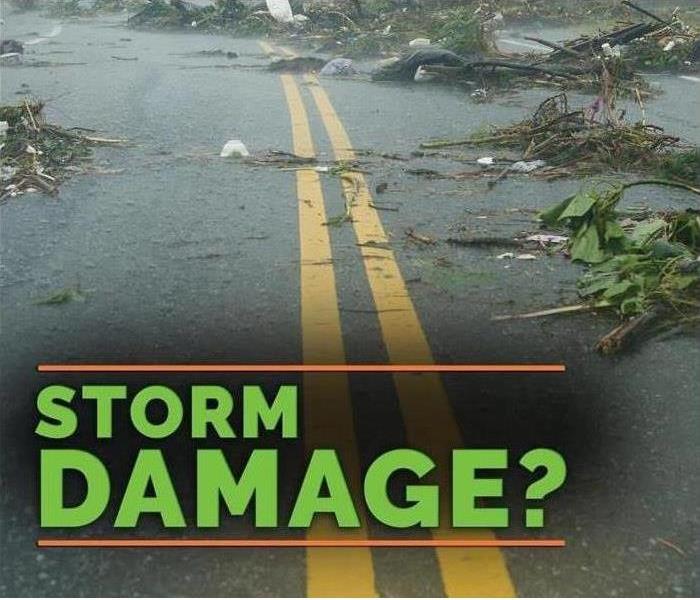 How do you secure your home and processions from further damage? Call in a mitigation company.
How do you secure your home and processions from further damage? Call in a mitigation company.
You are resting peacefully, when you are abruptly awoken by the storm sirens going off. You rush your family down to the basement to hunker down as the storm hits. Wind, rain, hail and lightning strikes, damaging window and roofs, starting fires. In the light of day you emerge with your family safe, but your home is damaged. Your roof is partial damaged and missing, the hail and blowing debris has smashed in windows. What do you do next? Call your insurance company, but knowing that a wide area of local community has been hit, it may take time for an adjuster to get to you home. How do you secure your home and processions from further damage? Call in a mitigation company.
A company like SERVPRO can be called into the disaster to start securing the homes in businesses in the area. What does that mean? Tarping and sealing that open roof, and board the broken windows. Why, because the first step is to stabilize the structure. The faster a building can be secured, and the environment inside that building can be stabilize the sooner mitigation can start. The sooner that mitigation is started, the more of the structure and personal procession can be saved. Once the mitigation is completed, the sooner reconstruction can start and the faster you can get back to living your life.
How Can Wind Mitigation Protect Your Home and Family During Severe Winds?
12/10/2020 (Permalink)
How Can Wind Mitigation Protect Your Home and Family During Severe Winds?
Wind is an unpredictable element that can threaten your home and safety. During periods of high wind, air currents can fluctuate and change directions without warning, placing pressure on all parts of a structure and potentially pulling it apart or lifting it from its foundation. When wind speeds climb, pieces of debris can also become dangerous — crashing into your home with significant force and potentially breaking through it and endangering your loved ones. But there are steps you can take to increase your safety with wind mitigation.
Protect Your Home from Wind Storm Damage
Traditional Homes
- Keep your home firmly anchored in high winds, have anchor bolts with heavy-gauge, square bolt washers installed to connect your floor to the foundation.
- Reinforce the rest of the frame by connecting wall and floor components with properly installed plywood or oriented strand board (OSB), and attach roof trusses or rafters to the walls with metal connectors.
- On existing homes, this can be done when replacing siding.
Manufactured Homes
- Manufactured homes are more prone to damage from high winds as a result of non-permanent foundations.
- Inspect all straps and tie-downs regularly for rust, weakness or wear, and have repairs made immediately.
Make Your Home Less Vulnerable to Wind Damage
Windows
- Install windows rated for the wind speeds in your region.
- For the best protection in hurricane-prone areas, install impact-resistant permanent shutters that meet applicable building code approved standards.
Doors
- To better resist wind pressure and flying debris, make sure your entry doors are solid wood or hollow metal.
- All entry doors should have three hinges and a dead bolt lock with at least a one-inch bolt throw length.
- Door framing should be securely anchored to the wall structure using fasteners that are at least three inches long.
- If you have double-entry doors, secure the inactive door with head and foot bolts that extend through the door header and into the subfloor.
- Patio doors should be made of impact-resistant safety glass.
- Shuttering doors offers extra protection.
Garage Doors
- Install doors rated for the wind speeds in your region.
- If building a new home in a hurricane-prone area, consider installing horizontally braced, single-wide garage doors instead of double-wide doors.
- For existing homes, check with your garage door manufacturer for availability of retrofit bracing kits.
- Be aware that your garage door panels, especially if double-wide, may require both horizontal and vertical bracing to ensure stability.
- You can also protect your garage door with a shutter or screen rated for wind pressure and debris impact.
Roofing
- Strong winds can cause shingles to peel off, especially if edge shingles are not well secured or the adhesive on their tabs has failed.
- A roofing professional can evaluate your roof, and if needed, additional roofing cement can be added under each tab to help keep the shingles attached during a high-wind event.
- The shingles should be attached to roof decking of solid 5/8' thick plywood.
- The roof decking should be attached to the roof framing using 8d ring shank nails, and a secondary water barrier created by installing self-adhering flashing tape over the joints in the roof deck.
- For greater resistance to wind uplift, apply a bead of construction adhesive along both sides of the intersection between the roof decking and the rafters or trusses; your roofing professional can provide you with information about additional safeguards.
Soffits
- To help anchor the soffits, the exposed siding under your roof rafters to your home, have a professional apply a bead of polyurethane sealant between the wall and the trim into which the soffit panels are inserted.
- You can also apply a dollop of caulk in the V-shaped hole where the joint between two soffit panels meets the trim.
Safe Rooms
- Designate a place in your home that will protect your family from injuries caused by broken windows and flying debris.
- The basement is often the best location for a safe room; otherwise, locate the room on the interior, ground floor of your home.
- An experienced contractor can equip your safe room with reinforced floors, walls and ceilings, regardless of whether you have a new or existing home.
Landscaping
- Avoid using gravel or rock landscaping materials, which can be hazardous when airborne. Shredded bark can be an attractive and less dangerous alternative.
- The National Oceanic and Atmospheric Administration (NOAA) broadcasts official Weather Service warnings, watches, forecasts and other hazard information, 24 hours a day, seven days a week. To tune into these NOAA Weather Radio (NWR) broadcasts, you’ll need an NOAA Weather Radio Receiver. These are available at many retail outlets.
When preparing your home for seasonal winds, it's also important to review your insurance coverage.
Top 4 Causes for Home Damage, According to Travelers Insurance
8/4/2020 (Permalink)
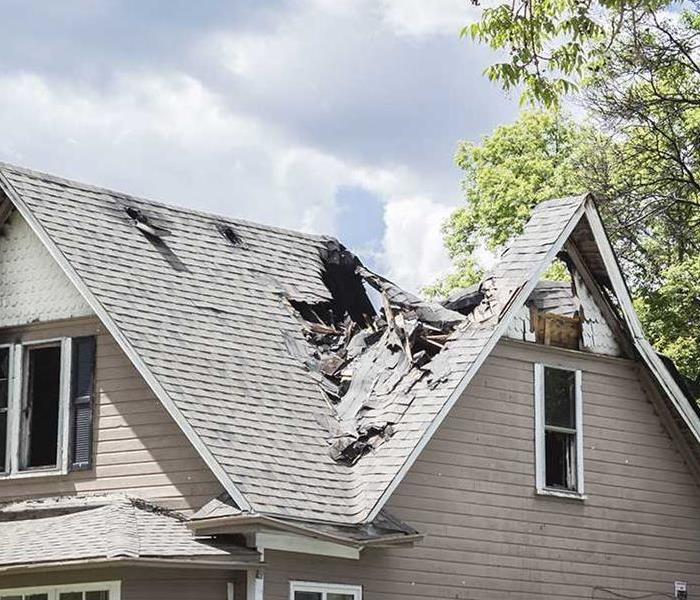 No one wants to imagine something going wrong with their house.
No one wants to imagine something going wrong with their house.
While no one wants to imagine something going wrong with their house, accidents happen. It’s important to be prepared for the worst. When a bad storm hits your town or a pipe bursts in your basement, for example, it can create severe and costly property damage.
Home insurance is critical to protecting your home when damage strikes; it’ll help cover the expenses when you need to fix or replace something. While claims may be unpredictable, there are a few things you can do around your house to help prevent these common causes of property damage in the first place.
- WIND
The Damage
The most common causes of property damage and home insurance claims are wind-related. Gusts of wind can uproot trees, damage roofs or even send outdoor furniture flying through windows.
What You Can Do
It’s important to limit the risk before the wind picks up. Look around your house and ask yourself ‘What could hit my home?’ Trees that are close to your home, furniture, etc can all be a cause of damage in high winds. Once you identify your risks, take precautions. Keeping trees pruned, strengthening structures and storing projectile objects indoors before a storm are great ways to get your home ready. This simple step could be the difference between a home insurance claim or just a little clean up once the storm passes.
- NONWEATHER-RELATED WATER
Twenty percent of reported property damage comes from non-weather-related water.
The Damage
When you think of water damage, you likely think of weather and flooding as the most common source. However, it’s actually more common for damage to come from water that is already inside your home. Things like the dishwasher, washing machine, pipes and toilets can all cause leaks or flooding.
What You Can Do
Always know where the water sources are and perform routine inspections. For example, if your washing machine has a rubber hose, you should check it annually for cracks or wear. Also consider turning off your water when you will be away from home for a long periods of time.
- HAIL
The Damage
Hail affects many different areas of the country, sometimes unexpectedly. Because it is often difficult to avoid hail striking, it is no surprise that it causes costly damage to cars and homes.
What You Can Do
If you have car, park it in a garage or under a roof if possible. Move items susceptible to hail damage, such as patio furniture, indoors or under a covered area.
While you can’t do much to protect your home or roof, you can try to strengthen it before hail strikes. Installing sturdy building materials that are more resistant to this type of hazard can reduce the damage.
- WEATHER-RELATED WATER
The Damage
While it may not be as high on the list as non-weather-related water claims, storms can bring costly water claims. Heavy rain and flooding can do a number on your house, but there are a few things you can do to prevent damage.
What You Can Do
Make sure your roof is in good condition and that the shingles aren’t old and worn. Downspouts should direct water away from home. Keep your gutters properly cleaned and free of debris. Take note of any areas where water pools near your home after a heavy rain and level the ground or install drainage. During the winter months, remove snow accumulation from the roof after every storm and insulate pipes.
Please follow our page, as we continue to explore the benefits of mitigation, and how this approach helps both your clients and your business. Please call us with any questions you have, 715-381-2266. Visit our site: SERVPRO of The Saint Croix Valley
Flood and Storm Damage.
6/2/2020 (Permalink)
While most business and homeowners know the destructive effects that flood damage causes, not everyone knows the right steps to take to mitigate the associated damage. These are incidents which need immediate professional intervention to learn what is restorable and what to replace. That is why it is vital for St Croix County residents to know how to act when faced with such incidents.
Remember water carries along all sorts of debris, oils, and mud into a premise. When contaminated water comes into contact with metallic surfaces, oxidation occurs, and they start to rust. To prevent such eventualities, extracting the water and cleaning is necessary. Our SERVPRO team can in some cases use wet-vacuuming to remove the debris and water. Truck-mounted pumps and portable generators for a power source are readily available from our stocked Green Fleet.
We may recommend a replacement if we notice that the water contaminated your porous materials. Where necessary, our team uses detergents and water to clean hard surfaces such as wood furnishings, desks, and metal cabinets before we dry them.
To dry your property, we set up air movers and leave them in position until we achieve the desired evaporation. Since evaporation moves moisture into the air, we position dehumidifiers to lower the humidity. Dependent on the situation at hand, we may decide to use desiccant, low grain or refrigerant dehumidifiers.
SERVPRO of The Saint Croix Valley is just a phone call away, 24 hours a day, 7 days a week. 715-381-2266.
Danger of a Leaky Roof
5/1/2020 (Permalink)
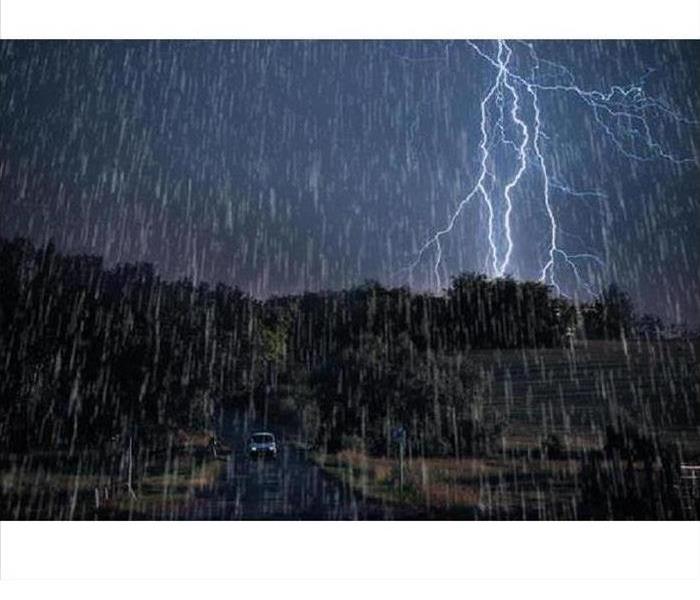 Heavy rains can expose roof leaks
Heavy rains can expose roof leaks
With all the different kinds of weather that we have had in the last month or so in the Saint Croix Valley, a durable roof is one of the most important infrastructures of a house, right after a strong, sturdy foundation. Just like it’s necessary to fix cracks in a foundation to ensure the rest of a house isn’t affected from the ground up, it’s important to fix leaks in a roof to protect a home from the top down, too. If you suspect you have a leaky roof, a roofing contractor can determine the cause and perform roof repairs, if necessary. To avoid any leaks or other issues from happening in the future, make sure to schedule regular inspections, perform general maintenance and upkeep, and have repairs completed as quickly as possible, since acting quickly could help you save time and money.
Causes and Sources of Leaks
There are a number of reasons why a roof may develop leaks, from both natural and manmade causes. No matter the cause, it's imperative to seek the services of a reliable roofing contractor to get your roof back in its best shape so that your home is protected from the elements.
SHINGLES AND FLASHING
Something as small and simple as a broken shingle could be the culprit of a leak. Severe weather, hail and high winds can cause shingles to become loose, crack and break off, leaving your roof exposed. If the nails used to secure shingles aren't properly sealed with a durable coating like roofing cement, it can leave exposed holes which can allow water and moisture to get into the attic. Broken or cracked flashing—the pieces of material installed under shingles, on joints and around chimneys—can also cause leaks. Both damaged flashing and missing shingles can be easily identified, usually as different, discolored patches or exposed areas on a roof. You may even find pieces of them in your yard after a bad storm.
IMPROPER INSTALLATION/REPAIRS
If you've had previous roof repairs done but if a leak keeps coming back, you've either got a problem with the workmanship of the roofing contractor who did the work or the materials they used (or both). Improperly installing elements such as skylights and chimneys can also cause roof leaks - this can happen from incorrectly measuring and fitting fixtures and/or insulation that's started to decay or disintegrate. Leaks from this kind of problem are generally easy to spot. Just look for wet spots or small streams of water coming out of skylights or running down walls/chimneys when it rains.
PLUMBING AND PIPE PROBLEMS
Pipes run throughout the home including the roof, which means there are a number of areas that are common leak sources related to your home's plumbing and ventilation system. These include plumbing vent pipes, ventilation fan ducts, attic vents and exhaust pipes/flues (for appliances). Anytime there are worn or cracked rubber boots and/or broken flashing around the vent pipes that come out of the roof, it's likely you're in need of repairs.
CONDENSATION AND MOISTURE
Since the attic is usually the least insulated—and the highest elevated—place in your home, it is more prone to mold and mildew growth from excessive moisture that can accumulate when condensation becomes trapped. The cause of the moisture is from wet weather such as rain, sleet, and hail, but also ice dams melting and the fluctuation in temperatures when seasons change. You'll most likely notice a smell—before you see the mold—as a sign of a leak in your roof.
What Can Happen if You Don't Get Roof Repairs
Whether you’re dealing with issues associated with weather and moisture or improperly installed parts, it’s essential to perform any necessary roof leak repairs as soon as possible – not only to fix the problem, but also to prevent any future damage. For example, if you have a moisture issue causing a leak that goes untreated, it could result in mold and mildew growth, which could not only destroy the wood in the attic, but also negatively affect your health.
Every roof experiences some level of wear and tear from all types of weather (sun, rain, hail, extreme heat, wind, etc.). As a home's first line of defense from these elements, it's important to make sure you have a durable, weatherproof roof that's properly sealed and maintained in order to increase the lifecycle of the roof and decrease the risk of damage to it.
The Importance of Roof Repairs
If you have a roof leak, repair it as soon as possible to avoid further damage and to help protect your home from bigger problems such as flooding. Contact a roofing contractor to have a thorough assessment of the roof completed and get advice on what steps you need to take to repair the damage. It’s best to work with a roofing contractor because their expertise is in roofing and they will be able to pinpoint and address your specific needs. Depending on the cause of the damage, your home insurance company may cover the costs of the roof repair, so make sure to contact your insurance company, too.
Lastly, if you should have a roof that leaks into the structure and need to begin the mitigation process, call SERVPRO of The Saint Croix Valley. Our team of professionals specialize in removal and mitigation of storm damaged material and have the experience of quickly drying out affected areas from storm and weather damage before it is made worse. We at SERVPRO of The Saint Croix Valley partner with all major insurance companies and vendors to make the transition back to “Like it never even happened,” as quickly as possible.
Call us today and let us show you. 715-381-2266
When It Rains, It Pours
3/25/2020 (Permalink)
It has been raining for three days straight and you feel like you should have webbed toes by now. By the end of the third day you come home from a long day at work and all you want to do is relax in your newly finished basement. That’s when you walk down the stairs and step on the carpet. You feel a squish between your toes, not that normal warm and fuzzy feeling, but that cold, wet and I think I need my waders feeling. The saturation of water outside from the rain found a way into your basement, soaking your drywall and carpet. You ask yourself, ugh, what to do now?
You have a few options:
- Try to run fans and dehumidifiers and try to manage the water yourself. Saves money up front, but could lead to major problems later in the year with potential mold issues or degrading of the building materials.
- You could bring a contractor into the project. Contractors do fabulous work, however they may tend to demo more of the area then is needed, as water restoration work is not there area of expertise.
- Call a Mitigation company like SERVPRO of The Saint Croix Valley to evaluate the loss. Once mitigation begins, materials that can be saved are salvaged and dried. Portions that cannot be salvaged are removed, and instead of replacing whole sheets of drywall you have a cost savings of only replacing what was damaged for example.
A property loss to your home is a stressful event, and it can seem like the end of the world. SERVPRO of The Saint Croix Valley understand these feelings and are able to mobilize quickly to start mitigation work 24 hours a day, 7 days a week. The faster stabilization work begins on the lost, increases the ability of mitigation to save materials.
Please follow our page, as we continue to explore the benefits of mitigation, and how this approach helps both your clients and your business. Please call us with any questions you have, 715-381-2266. Visit our site: SERVPRO of The Saint Croix Valley
Severe Weather Season Is Almost Here
3/23/2020 (Permalink)
Severe Weather Season Is Almost Here
You are resting peacefully, when you are abruptly awoken by the storm sirens going off. You rush your family down to the basement to hunker down as the storm hits. Wind, rain, hail and lightning strikes, damaging window and roofs, starting fires. In the light of day you emerge with your family safe, but your home is damaged. Your roof is partial damaged and missing, the hail and blowing debris has smashed in windows. What do you do next? Call your insurance company, but knowing that a wide area of local community has been hit, it may take time for an adjuster to get to you home. How do you secure your home and processions from further damage? Call in a mitigation company.
A company like SERVPRO of The Saint Croix Valley can be called into the disaster to start securing the homes in businesses in the area. What does that mean? Tarping and sealing that open roof, and board the broken windows. Why, because the first step is to stabilize the structure. The faster a building can be secured, and the environment inside that building can be stabilize the sooner mitigation can start. The sooner that mitigation is started, the more of the structure and personal procession can be saved. Once the mitigation is completed, the sooner reconstruction can start and the faster you can get back to living your life.
Please follow our page, as we continue to explore the benefits of mitigation, and how this approach helps both your clients and your business. Please call us with any questions you have, 715-381-2266. Visit our site: SERVPRO of The Saint Croix Valley
7 Must-Have Items For Your Storm Emergency Kit
12/6/2019 (Permalink)
7 Must-Have Items For Your Storm Emergency Kit
When it comes to hurricanes and tornadoes, you can't be too prepared. Atlantic Hurricane Season runs from June 1 to November 30, and while tornadoes can occur any time of the year, peak season is May and early June for the Southern Plains, early spring for the Gulf Coast, and June and July in the Northern Plains and Upper Midwest. No matter where you live, it's never too early to gather supplies and put together your storm emergency kit. Use these helpful hacks to create your own storm emergency kit with items you probably already have around your house.
- The Basics: Of course, no hurricane emergency kit would be complete without first-aid supplies, personal medications, non-perishable food for a minimum of three-to-five days (including baby formula), clean water, toilet paper, soap, emergency blankets, matches, and a flashlight with extra batteries. These are also the first to fly off the shelves as soon as a hurricane watch is issued.
Pro Tip:Make sure to include a manual can opener in your kit for your non-perishable food items.
- Bleach: You should have at least a gallon of clean water per person per day for three-to-five days in your emergency kit. But if you're running low on clean drinking water and can't boil any, the CDCrecommends that you use unscented household bleach as a method of water purification. Add one-eighth of a teaspoon of unscented bleach to a gallon of water, mix it well, and let it stand for at least 30 minutes before drinking.
Pro Tip:Do not use bleach that is six months or older, and be sure to open windows or doors to get fresh air when using bleach.
- Goggles, Work Gloves and Breathing Masks: If you have damage during a hurricane or tornado, this protective gear will come in handy during cleanup. It can help keep you from being contaminated by exposure to harmful materials like lead, asbestos, cement, or mold.
- Trash Bags: There are several ways that trash bags can come in handy during a hurricane or tornado emergency. In addition to their obvious function, you can wear trash bags as rain ponchos, use them as temporary tarps, or to collect rainwater. And since they don't have an expiration date, you can stock up.
- NOAA Weather Radio (NWR): A battery-powered All Hazards NOAA Radio is a must-have in a weather emergency. With over 1000 stations across the 50 states4, it provides 24/7 live updates from the National Weather Service on weather and emergency information. You can also get live updates from the NWR on the FEMA app, but only if you have cell service and a charged battery.
Pro Tip:Don't wait until a storm emergency to buy a NWR receiver, because that's when stores sell out. If you can't get a NWR, a hand crank or battery-powered radio with extra batteries works too.
- Hand Tools: You probably already have a screwdriver, wrench, and pliers in your home (if not, read 10 Things Every Handy Homeowner's Toolkit Should Have), so you'll want to keep them handy in your emergency kit. You may need a wrench or pliers for turning off utilities, and a screwdriver to remove storm shutters from your windows after a hurricane.
Pro Tip:Familiarize yourself with your home's utilities and know how to access the water, gas, and power shut-off valves in advance. - Home Inventory:
Creating a list of your belongings is an extremely important step in emergency storm and claims preparedness. Take stock of everything in your home, so you have it documented before a hurricane or tornado is approaching. Having this record will make the claims process much easier if damage occurs.
Now that you know what should be in your emergency storm kit, you can get a head start on stocking yours with the non-perishables and tools you hope you won't need. It'll save you a hectic trip to the store and ensure you’re ready for the next storm that comes your way.
When Storms or Floods hit, SERVPRO is ready!
6/15/2017 (Permalink)
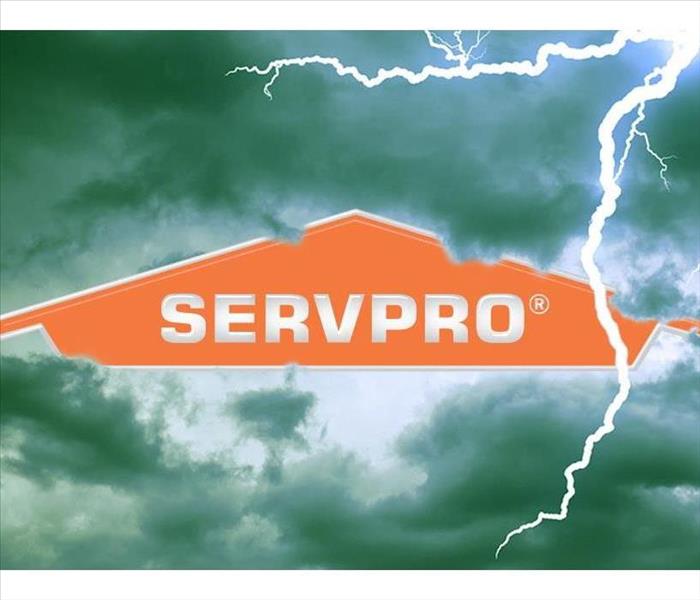 Our highly trained crews are ready to respond 24/7 to storm or flood damage in Pierce and St. Croix County.
Our highly trained crews are ready to respond 24/7 to storm or flood damage in Pierce and St. Croix County.
SERVPRO of The Saint Croix Valley specializes in storm and flood damage restoration. Our crews are highly trained and we use specialized equipment to restore your property to its pre-storm condition.
Faster Response
Since we are locally owned and operated, we are able to respond quicker with the right resources, which is extremely important. A fast response lessens the damage, limits further damage, and reduces the restoration cost.
Resources to Handle Floods and Storms
When storms hit Pierce and St. Croix county, we can scale our resources to handle a large storm or flooding disaster. We can access equipment and personnel from a network of 1,650 Franchises across the country and elite Disaster Recovery Teams that are strategically located throughout the United States.
Have Storm or Flood Damage? Call Us Today, 715-381-2266
Storms
7/7/2016 (Permalink)
Tuesday night's storm hit Pierce county particularly hard. We have taken in quite a few water damages, both from leaking basements and trees falling on roofs, sewage backups, even a lightning strike. SERVPRO of The Saint Croix Valley is here to help if you expereinced damage to your home or business. Please call our office at 715-381-2266.
http://www.piercecountyherald.com/news/region/4068445-wind-damage-flooding-plague-pierce-after-tuesdays-storm






 24/7 Emergency Service
24/7 Emergency Service












